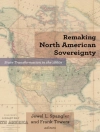Borders and conflict in South Asia is the first full-length study of the 1947 drawing of the Indo-Pakistani boundary in Punjab. Using the Radcliffe commission as a window onto the decolonization and independence of India and Pakistan, and examining the competing interests, both internal and international, that influenced the actions of the various major players, it highlights British efforts to maintain a grip on India even as the decolonization process spun out of control. Drawing on extensive archival research in India, Pakistan, and Britain, combined with innovative use of cartographic sources, the book paints a vivid picture of both the partition process and the Radcliffe line’s impact on Punjab.
This book will be vital reading for scholars and students of colonialism, decolonization, partition, and borderlands studies, while providing anyone interested in South Asia’s independence with a highly readable account of one of its most controversial episodes.
Содержание
List of plates
Table
Acknowledgements
List of abbreviations
Glossary
Note on terminology
Introduction
1 ‘Standing on the edge of a volcano’: The historical context of partition
2 ‘This is your country and it is up to you to decide’: The façade of South Asian responsibility
3 ‘Nobody had been paying any attention to the case’: The boundary commission at work
4 ‘Water was the key’: Radcliffe’s private deliberations
5 ‘A political decision, and not a judicial one’: The Radcliffe award
6 ‘The stories they carried’: The aftermath
7 ‘An awful lot of thought should have gone into it’: Alternatives to the Radcliffe award
8 ‘In between, on a bit of earth which had no name’: The development of the Indo-Pakistani borderlands
9 Imperial epitaphs: Cyril Radcliffe and the end of empire
Conclusion: ‘No such deeds’: Responsibility and remembrance
Note on sources
Bibliography
Об авторе
Lucy P. Chester is Assistant Professor of History and International Affairs at the University of Colorado at Boulder












